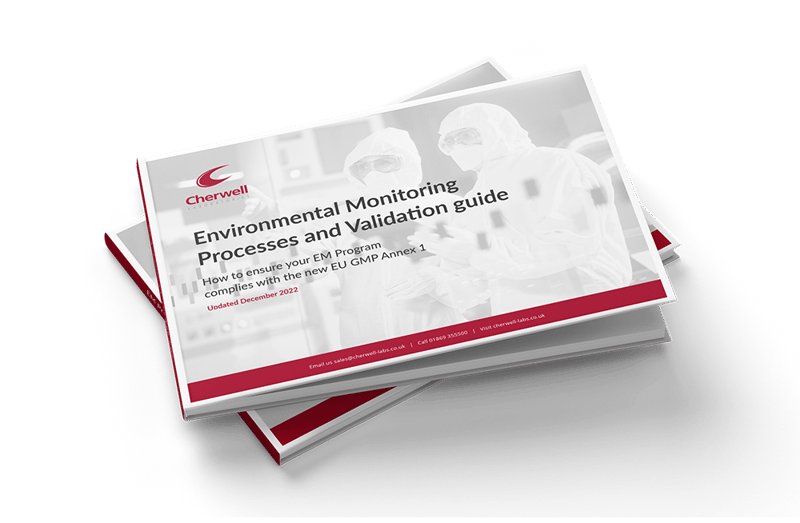With the latest revision of EU GMP Annex 1 focussing on achieving the highest standards of patient safety, all healthcare businesses that make use of cleanrooms in manufacturing and production are revisiting their environmental monitoring policies. This latest revision is also a big step towards creating a recognised global standard for the maintenance of cleanroom environments, hence the level of detail.
If your business is one of those affected by this latest revision of the EU GMP Annex 1, you’re undoubtedly exploring ways to ensure your environmental monitoring (EM) measures are efficient, effective and compliant. With Annex 1 in operation from 25 August 2023, processes must be ramped up for compliance, to ensure an effective environmental monitoring programme and meet international standards. Microbial air sampling is one area to focus on.
Microbial air samplers are a staple piece of equipment in cleanrooms, and play a critical role in maintaining confidence in an aseptic environment. Regardless of the industry sector in which your business is active, for the best results all cleanroom operators need to utilise both active and passive equipment to obtain accurate measurements.
Passive environmental monitoring is the most basic requirement
Passive sampling is performed with settle plates. These are standard Petri dishes filled with prepared culture media, and left open to allow colonies of bacteria to settle and develop. The results can then be counted, enabling measurement of the viable biological particles in the air and microbial contaminants.
This method of EM and its test results are not quantitative, in that it cannot capture and detect smaller particles suspended in the air, or sample specific volumes of air. Depending on the level of contamination, settle plates do not always provide accurate data to drive improvements and solutions. Yet they are cost-effective, and require only minimal additional equipment, such as settle plate stands or plate carriers.
Active environmental monitoring offers precision
Active monitoring is an accurate way of measuring any contamination in the air. To perform active environmental monitoring, an air sampler draws in a specified, known volume of air, through or over a particle collection device, such as an agar plate. The culture is then secured and placed in an incubator then analysed, which will provide insight into information such as the bacterial or fungal count and the colony forming units.
Active air sampling will give a quantitative result, and most modern air samplers are easy to use and deploy for general environmental monitoring applications. Portable samplers, such as the SAS Super 180, allow users to quickly sample at multiple locations within a cleanroom. The SAS range of microbial air samplers have a programmable delay start function as standard. A delayed start allows any impact or environmental contamination from the operator to be ‘cleaned’ from the area before the sample is taken. This helps to ensure that the operator setting the samples does not influence the sample result.
A sampling system for isolator cabinets or Grade A filling lines
To monitor within isolator cabinets or Grade A filling lines, a sampling system to sit permanently inside the cabinet will be necessary, with the control unit placed externally.
As an added precaution, in the instance of isolator cabinets, the number of transfers will need to be limited to reduce the risk of contamination. In filling lines, the number of interventions should be controlled to mitigate contamination. An installed system can help to greatly reduce these transfers and interventions, and thus the associated risks.
Ensure you have the right air samplers for your business
An audit of your current equipment and needs will help to focus on the features and benefits of any new samplers. There are many important factors to consider before deciding on an air sampler, as these will determine the viability of any microorganisms collected. To be confident in the effectiveness of your sampling, you must ascertain the following:
- The characteristics of the particles to be sampled (type, size)
- The sensitivity of those viable particles to the sampling procedures in place
- The estimated concentration of the collected particles
- The collection efficiency of each sampler
- The appropriate prepared culture media to use
- The ambient conditions of the sampled area
- Whether the sampler has the right airflow velocity for low levels of viable particles
You should also consider the appropriate sample to collect. For example, in your sampling plan, do you wish to collect 1m3 as quickly as possible due to the high number of sample points, or is slower, continuous sampling of the air throughout the operation of the aseptic process more appropriate? Also note the accuracy of the data each sampler is guaranteed to collect, whether the sampler is easy to handle and implement in your operation, and that it is easy to keep clean and sterilised.
For best practice, a combination of active and passive air sampling should be underpinned by a continuous, real-time monitoring system such as the BioAerosol Monitoring System (BAMS). BAMS uses bio-fluorescent particle counting (BFPC) technology to deliver continuous environmental monitoring with instantaneous alerts. This has the potential to significantly reduce losses, as it enables an immediate response should contamination occur, and can help support Annex 1 compliance.
EM process and equipment must provide an accurate representation of the environment
To ensure confidence in the output and data retrieved from processes and samplers, equipment must be properly validated and calibrated. EM process and equipment must address your specific challenges, and have all the features necessary to ensure the risk of contamination is mitigated.
Aseptic processes and EM equipment must be appropriate for the size of the manufacturing area, with the most effective number of sample points. Risk assessment must be possible to inform a sampling regime, and make use of both active and passive methods for sample capture.







